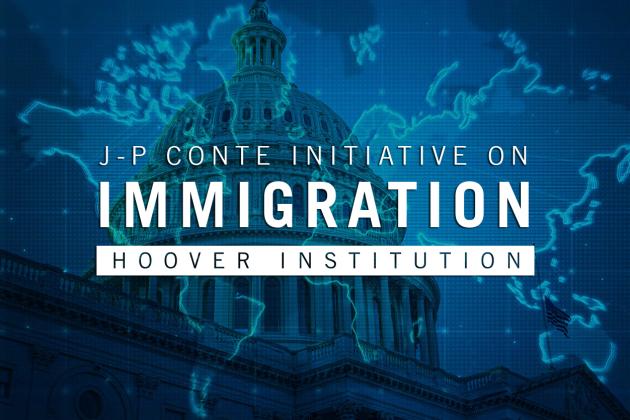PARTICIPANTS
Darrell Duffie, Michael Boskin, David Brady, John Cochrane, Tom Gilligan, Bob Hall, Rick Hanushek, Bob Hodrick, Nick Hope, Dan Kessler, Lee Lockwood, David Mulford, CDR Michael Nordeen, CDR Rebecca Ore, Monika Piazzesi, Josh Rauh, CDR Michael Schoonover, John Taylor, Ramin Toloui, Francesco Trebbi, Sean Xu.
ISSUES DISCUSSED
Darrell Duffie, Dean Witter Distinguished Professor of Finance at the Stanford Graduate School of Business, presented “Bank Debt Overhang and Financial Market Liquidity” based on an upcoming book and a series of lectures he gave at the Bank of Italy.
Duffie focused on bank intermediated OTC (over the counter) markets. This is where much of the action is, and much of the effects of financial regulation. These are the workhorse markets for running economy, — bonds foreign exchange, swaps, and repurchase agreements. When a corporation needs working capital, funding for an investment project, or to sell goods overseas, when governments want to sell debt, these are the markets they turn to. So how well over the counter bank intermediated markets are working is a vital question.
Some major implications of Duffie’s work:
1) There is more stability, from more capital, and the resolution mechanism. Resolution has played a big role in day-to-day markets. People now really do believe a bank can fail.
2) The leverage ratio is not helping. This standard says that banks must issue 6% equity capital as a backstop for any asset, without regard to risk. Even totally riskless investments need 6% capital. This requirement has caused banks to move away from safe assets. Risk based capital standards would be better.
In fact, we are almost at the worst middle point. The leverage ratio is binding, but not binding enough. If banks had so much capital that they couldn’t possibly fail, then the leverage ratio would not stop them from taking on nearly risk free activities. As it is, the “debt overhang” problem is about as bad as it can be.
3) We have higher capital, which should mean that banks are safer. But now bid/ask spreads are also higher. Why? The answer is Resolution. Bank creditors now really do think regulators will allow banks to fail and will not bail out creditors. They know they are in for haircuts. In this way, pricing of risks is now about right, as it doesn’t have too big to fail guarantee.
4) Regulators should speed intermediation reforms that do not need bank balance sheet space. Central counterparties and all-to-all trading platforms can solve some of these problems.
The talk focused mostly on how 2 and 3 are impinging on day-to-day efficiency.
In the first slide, Duffie shows how debt overhang is the main issue, and the reason that banks are not taking on even fairly riskless activities. Red is assets, blue and green are the market value of debt and equity. What if the firm has a profit opportunity, which it funds by new equity? This raises market value of debt, since it makes the firm safer. It must therefore decrease the value of old equity. Old equity will not take on such a new opportunity.
The second slide evaluates risk based capital requirements and stress tests. A low value of the graph measures how close we are to constraints. Clearly, the leverage ratio is the binding constraint. Yes, banks have to have capital to hold treasuries.
The next slide illustrates dramatically how much capital requirements are binding. This slide is repo markets. On Top US banks do about $500 billion per day. In blue are the European banks. Notice the dramatic drop at quarter end. What’s going on? European banks face capital requirements on the last day of the quarter, and sell all their positions to “window dress.” US banks face the requirement as an average of daily values. (At quarter ends, Federal Reserve reverse repo fills in where the Europeans left a useful function of this facility). This shows that leverage ratio rules are really binding. This is treasury repo, with no risk-based capital so you know it’s the binding leverage constraint.
The next slide illustrates repo intermediation. There used to be no risk requirement, as this is as risk free an activity as there is. In the new world, this activity needs new capital. Again, increasing capital even to risk free profit makes debt more valuable, and so the value of existing equity must decline. The bank must get a much wider bid/ask spread or profit to make it worthwhile.
And in the next slide, we see the bid/ask spread have widened and volumes are way down.
Part of what’s going on is that bank’s borrowing costs have risen, as counterparties now worry they can fail in resolutions. The right hand side shows banks credit spreads. These have risen from 20-75 bp to 100+ basis points. The left hand side shows cross-currency basis, covered interest arbitrage. This pure arbitrage spread widened in the financial crisis and has not come back.
The next slide shows the debt overhang story for this pure cross currency arbitrage. All profit goes to creditors. The bank added a risk free asset, it makes debt safer, and thus equity unsafe. This point is so counterintuitive — a bank will not take on a pure arbitrage opportunity — that the following slide works through a detailed example.
Of course, traders don’t think about “debt overhang.” in reality traders ask for deal, and the bank’s treasury charges them the now higher funding cost. At that higher borrowing cost, the deals don’t make sense.
The implication is: Get rid of leverage or make it way more binding. If the leverage ratio were really large, bank credit spreads would shrink to nothing as banks could not fail, and making debt even safer would not eat up value from equity. Or move transactions off bank balance sheets.
Why is this not happening on its own? Banks don’t want markets to go to exchanges. The bid/ask is still small enough that exchanges don't see the advantages to get it going. Banks are also accused of blocking exchange based trading, and recently settled a suit for 1.8 billion. They have been effective at reducing movements to all-to-all platforms.
Some progress is being made on carve outs for risk free trades, like holding reserves. The trouble is lots of risky trading hides the actual risk free trades.
Why does the business not go to smaller less regulated institutions? Duffie answered that it seems that handling large client needs and trading, and intermediating go together.
Are there real effects? Are corporations able to get funding? It is hard to get liquidity in corporate bonds. We are seeing smaller, more fragmented issues. And secondary markets are very illiquid. Bid ask measures really have gone up, and waiting times gone up too. Dealers now want to match buyers and sellers rather than hold inventory on balance sheets. Inventories are down by factor of 10. That means you often wait rather than just get a bad price.
- John Cochrane









